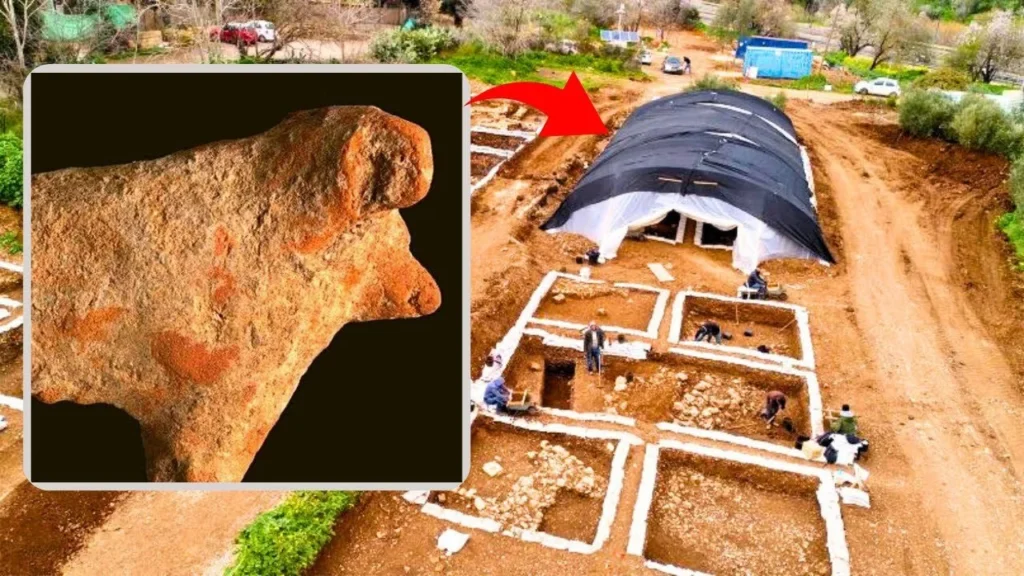In a groundbreaking archaeological discovery, scientists believe they have uncovered one of the oldest human burial sites in the world within a limestone cave in central Israel potentially reshaping our understanding of early human spirituality and funerary customs.
The site, known as Tinshemet Cave, has yielded the remains of at least five early humans dating back between 100,000 and 110,000 years, meticulously arranged in fetal positions inside shallow pits. The discovery, first detailed in the academic journal Nature Human Behavior earlier this year, places Israel once again at the center of prehistoric exploration into humanity’s origins.
“This is one of the most compelling pieces of evidence we have of early human burial practices,” said Professor Yossi Zaidner, a leading archaeologist from the Hebrew University of Jerusalem and one of the excavation’s directors. “It not only tells us how they treated their dead but may also reflect spiritual or ceremonial beliefs.”
Ritual Offerings Point to Early Spirituality
Among the most captivating elements of the find are the artifacts accompanying the skeletons. Red and orange ochre pigments commonly associated with symbolic or ritual use were found in abundance, along with basalt stones, animal bones, and pebbles, many of which were sourced from distant regions.
“These items had no practical function in daily life,” said Zaidner. “They appear to have been chosen deliberately for ritual purposes, potentially to honor the dead or signify a belief in an afterlife.”
The ochre fragments numbering more than 500 suggest that early humans at Tinshemet not only engaged in funerary rituals but also had the technological knowledge to manipulate natural resources. The pigment is created by heating iron-rich rocks to specific temperatures, hinting at a sophisticated understanding of materials.
Well-Preserved Skeletons Tell a Story of Respect for the Dead
Excavations, which began in 2016 and occur mostly during the summer months, have revealed two near-complete skeletons and three skulls, along with other scattered bones and teeth. One of the skeletons was so intact that archaeologists could clearly identify its clasped hands placed gently beneath its head a sign, experts say, of intentional burial with care and dignity.
The state of preservation has been exceptional, attributed largely to the presence of ash layers, likely from ancient fires, and the naturally acidic limestone environment. Together, these elements helped protect the organic remains for over 100,000 years.
Archaeology students and researchers working with precision tools from hand chisels to dental-grade pneumatic drills continue to excavate the site piece by piece. The skull of another early human is now partially visible at the cave’s entrance, though it may take years to fully extract.
Shifting Theories on the Origins of Burial
The Tinshemet discovery contributes to growing evidence that burial practices emerged much earlier than previously thought. Traditionally, archaeologists believed that deliberate burials began around 30,000 to 50,000 years ago. But findings like this suggest that such practices may have developed during the Middle Paleolithic era between 250,000 and 30,000 years ago.
Controversy still surrounds even older burial claims. In South Africa, remains of Homo naledi a distant relative of modern humans have been interpreted by some scholars as evidence of deliberate cave burials dating back over 200,000 years. Yet many in the archaeological community argue that the evidence remains inconclusive.
A Prehistoric Crossroads
Israel, often described as a prehistoric bridge between Africa and Europe, continues to yield fossil evidence of both Neanderthals and Homo sapiens, suggesting complex interactions and perhaps even interbreeding between early human populations.
Researchers are still studying the Tinshemet skeletons to determine their classification: whether they belong to Neanderthals, modern humans, a hybrid lineage, or an entirely distinct group.
Regardless of their origins, the remains from Tinshemet Cave offer rare and valuable insight into the minds and beliefs of our ancestors, adding new layers to the human story that has long remained buried — until now.


